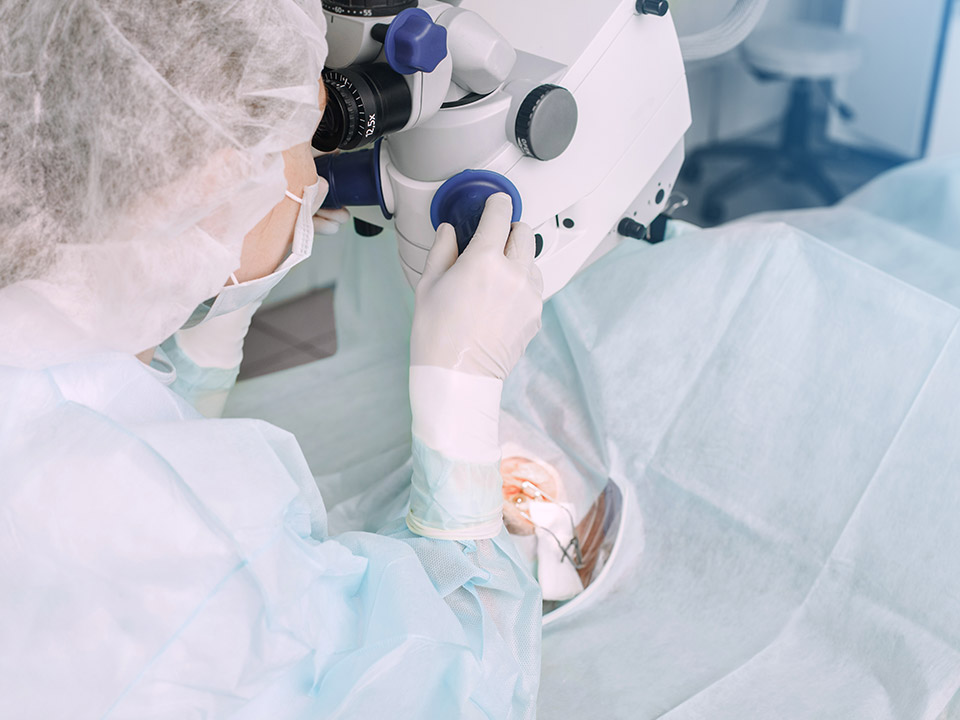Differences Between LASIK and PRK Eye Surgery

Laser-assisted in situ keratomileusis (LASIK) and photorefractive keratectomy (PRK) are the most common eye procedures to correct vision problems caused by refractive errors like astigmatism, nearsightedness, and farsightedness. While both procedures are effective, there are some key differences between them you ought to understand to choose the best procedure for you.
This article will give you an overview of the differences between LASIK and PRK surgery to make the process a breeze.
LASIK Vs PRK Procedural Differences
LASIK and PRK are laser surgery procedures that improve eyesight by modifying the corneal layer. Your cornea comprises five thin, clear layers of tissue that refract and concentrate light to enhance vision.
LASIK and PRK each employ different techniques to help improve your eyesight by reshaping corneal tissue.
What Happens During LASIK?
With LASIK, your eye surgeon gives you drops to numb your eye tissues. He then creates a small flap in your cornea using a femtosecond laser or a thin blade. Afterward, he raises the flap and uses an excimer laser to reshape the cornea. After the procedure, the flap is lowered back down, and the cornea heals independently over the next few months.
What Happens During PRK?
With PRK, you are given numbing drops to ensure you experience no pain during the procedure. The surgeon fully removes the epithelium, or the top layer of the cornea, and uses lasers to reshape layers of the cornea, along with any irregular curvature in your eye. Afterward, a special bandage that resembles a contact lens is placed above the cornea to help the tissues underneath heal.
What’s Recovery Like?
LASIK and PRK eye surgeries have significant long-term advantages that outweigh the short-term discomfort of surgery. Recovery times for both procedures are extremely different. Unlike PRK, LASIK recovery may take a few hours. Whether you choose LASIK or PRK, issues arise if you aren’t careful. After surgery, make sure to wear sunglasses and avoid rubbing your eyes.
LASIK Recovery
With LASIK, the hinged flap is readjusted. Compared to PRK, recovery from LASIK surgery is way quicker, with most patients able to resume their regular activities by the following day. Your eyesight can be much improved and functional before leaving the office.
You may experience some slight burning or discomfort a few hours after surgery. Your eye surgeon will give you some eye drops and pain medication after the surgical procedure.
PRK Recovery
With PRK, the affected eye is covered with a special bandage placed over the cornea’s surface layer to aid in regeneration and healing. Your eye surgeon will apply the bandage lens immediately after treatment, and once the surface has healed, he will take the lens out. You’ll have a functional vision as your eyes heal while wearing the bandage contact.
During recovery, you may experience irritation, blurriness, and light sensitivity for a few days. But, after several days, your surgeon will remove the bandage. You’ll also be given some eye drops and pain medication to use a day or two after surgery.
Usually, partial recovery lasts some days. Vision stabilizes and works very well after the first healing. Even though complete recovery may take up to a month, most patients tend to resume normal activities after removing the bandage lens. Your eyesight should improve each day gradually throughout recovery.
LASIK vs PRK Procedure Complications
LASIK and PRK have side effects that may last for days after surgery.
LASIK Complications
While LASIK causes little discomfort, up to 20% of patients report visual problems after the procedure. Blurry vision due to diffuse lamellar keratitis may be brought about by post-operative dryness.
About 85% to 95% of patients report feeling dry eyes a week after surgery.
You may also experience scratchy eyes, glare, or small pink or red patches on the sclera, the white part of the eye.
PRK Complications
Patients undergoing PRK may feel as if they have sand in their eyes. During the first 4-6 weeks following the PRK procedure, a person may notice halo-like effects around lights. This happens more often at night. Other associated risks and complications include cloudiness of the cornea, infection, or scarring.
Who is Eligible?
Eligibility for either LASIK or PRK is based on several factors, including:
- The person’s age – one must be over 18.
- The stability of the vision should not have changed significantly over the previous year.
- The health of the eye.
- Corneal health and thickness – average pupil size should be about 6mm in a dark room.
- The severity of the refractive error and whether s treatable with surgery.
Common situations that can make one ineligible for a LASIK or PRK procedure:
- If you have significant conditions affecting your eyes, such as diabetes or glaucoma.
- If you have chronic allergies that may affect your eyelids and the healing process.
- If your corneas are thin because they may not be strong enough to handle the procedures.
- If you’ve previously had a PRK or LASIK surgery which may increase your risk of complications.
Bottom Line
LASIK and PRK are both safe and effective at treating several visual problems. However, LASIK has a quicker recovery time and fewer adverse effects. Most medical professionals also recommend it because it is a safer and more precise technique. But regardless of which one you pick, you can rest easy knowing that your vision problems will soon disappear.




